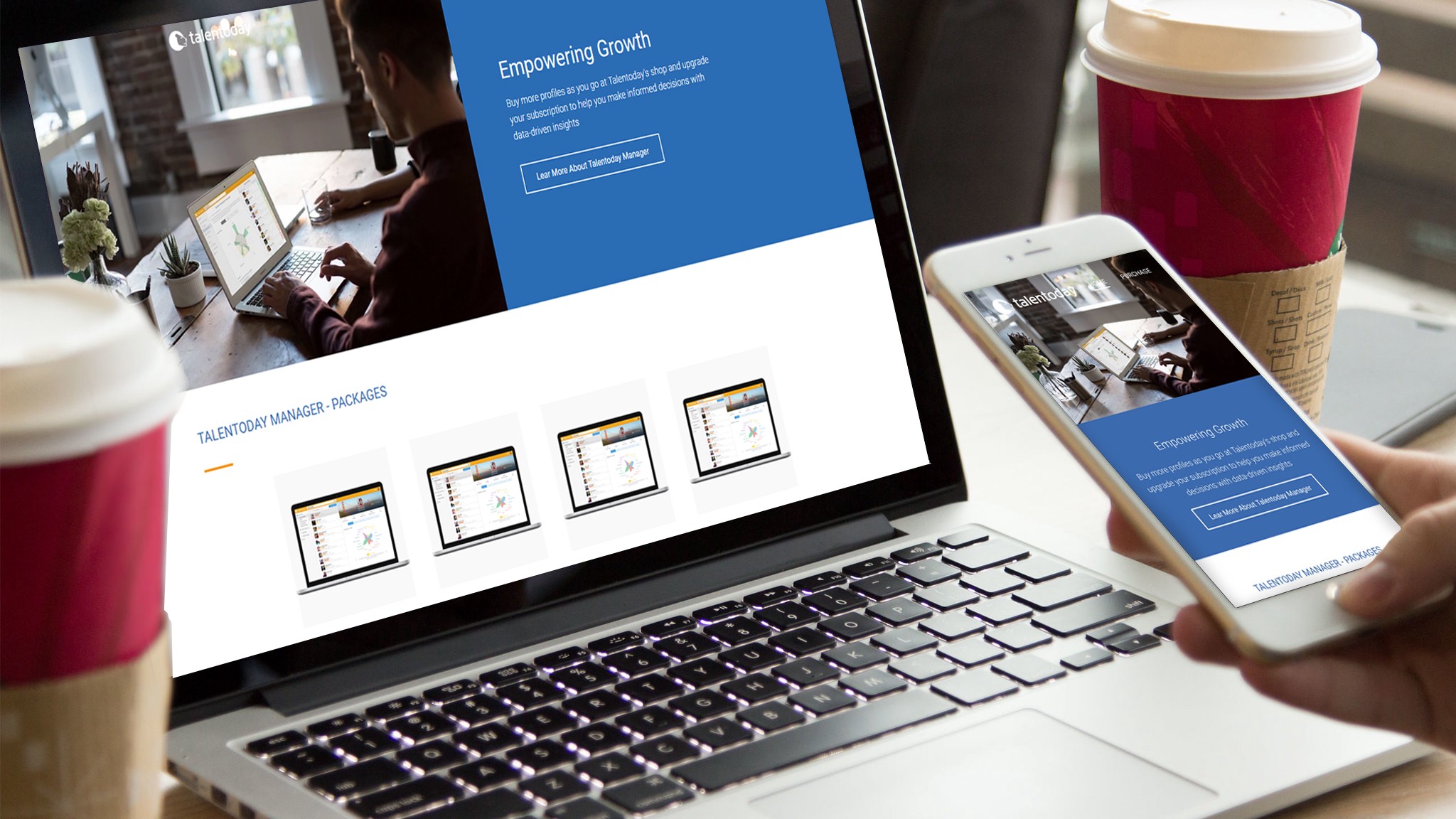Employee Recognition to Turn the Holidays into the Season of Company Culture and Commitment

The holiday season can stir up a whirlwind of emotions inside and outside of work — from happy to excited, and for some, stressful. During the holidays, companies and teams may celebrate with special parties and events, but offices can also become ghost towns, with many employees taking additional time off. Adversely for some industries, the holiday season may be their busiest time of year.
Through the high points and low points of the holiday season, what can managers do to keep their employees motivated, while enhancing their commitment to the organization in the new year?
Make it Personal
Some organizations may have the luxury of being able to provide company-wide holiday presents and/or year-end bonuses, which can help with the overall sense fulfillment for employees. However, many companies do not have this option, or they feel like company-wide gifts may seem impersonal.
According to Great Place to Work, “It is key that employers focus on how they can make authentic and meaningful recognition part of their management philosophy in order to retain top talent and encourage high performance.” For managers, knowing that a need for unique recognition is important, the holiday season creates an opportunity to motivate employees on an individual basis to end the year strong!
Recognition Without Breaking the Bank
As can be seen by Talentoday’s assessment, individuals’ motivations are unique. While some people are heavily motivated by money, others may be more motivated by external recognition, or the ability to socialize.
To recognize individuals on your team, it could be as simple as writing an email or handwritten note, highlighting accomplishments throughout the year. Additionally, during the holiday season, employees may have the burden of hectic travel or spending their holidays away from their loved ones. For those teammates, consider giving them snacks for the road, a good book, or recommending a podcast to pass the time. For employees that will be spending time away from family and friends and missing their hometown, consider specific items that would remind them of home, such as candies, drinks, sports memorabilia or photos. Lastly, for employees who spend much of their year traveling for work, this is a great opportunity to provide a gift than can be shared with their family, such as a gift basket or a gift card for a meal together.
Establish Employee Commitment
Unfortunately for some organizations, the phrase, “new year, new me,” can often signal individuals looking to start a new job in the new year. Similarly, the start of the new year often means that new company budgets are established or replenished, allowing organizations to actively recruit.
Knowing this, the holiday season is a great time to ensure and re-establish commitment to the organization. Outside of recognizing individual achievements and rewarding employees on a more personal level, organizations can use this time to come together and reflect on the past year and provide transparency on goals for the upcoming year. Furthermore, outside of company-wide meetings, managers should be frequently engage employees by, “creating a respectful and trusting relationship with their direct reports, communicating company values and setting expectations for the day-to-day business of the organization,” as they play a key role in overall employee engagement.
As organizations are wrapping up their year-end initiatives and gearing up for 2020, it’s never too late to think of unique ways to serve and recognize the people giving back to the company on a daily basis. Whether a company is small or large, personalized actions or recognition can go a long way and can be done with little to no budget, allowing all employers a fair chance to motivate their teams this holiday season!
Knowledge Transmission and Engaging Expert Collaborators

In a global economy facing constant competition and ever-increasing challenges, companies must ensure the transmission of knowledge and know-how internally in order to move forward and progress. Knowledge management and internal knowledge sharing are crucial for companies to maintain critical skills.
Obstacles linked to human collaboration
Nowadays, the difficulty lies in the ability of organizations to stimulate a dynamic exchange of knowledge, while leveraging employee engagement. Due to a lack of self-confidence, demotivation or simply a lack of recognition from existing employee skills, employees are not always willing to cooperate and share their expertise. Management and managers will need to put in place incentives and develop a culture of recognition to improve knowledge transfer. It is necessary to set up a management system based on trust, a strategic lever in service of performance, for which the organizations HR or L&D leaders would be accountable for managing (1).
Multiple benefits for your company and your employees
The benefits for companies are plural. Knowledge management and transmission have a direct impact on financial gains and cost reduction through: expertise control, speed of task execution, productivity increase, error alleviation, risk management control, and time management for innovation. In fact, employees have increased motivation when they feel that they are acquiring skills quickly and can improve their work. Making them more inclined to change and ready to take up many challenges. In a world seen through the prism of the VUCA model, an acronym for “Volatility, Uncertainty, Complexity, Ambiguity”, organizations need a rapid transfer of knowledge in order to evolve and reinvent themselves, which requires a lot of agility and efficiency.
A new organizational model
New business models must be found while building on the knowledge and know-how, of the company’s core business. A new organizational model has emerged: the learning enterprise (2). In his research Jean-Louis Boutte explains and I quote: “ The company is now considered a living organism, beyond the biological and cybernetic brain, susceptible to organizational learning (Argyris and Schön, 1996). In this model, knowledge is considered as the first wealth and sources of added value. Cross-functionality, systematic networking and a permanent circulation of knowledge foster the emergence of new knowledge and collective intelligence.”
In the digital age, everyone becomes a contributor, designer, producer of ideas, content and opinions. This naturally leads to more collective and cooperative modes of organization that gradually replace pyramidal, hierarchical organizations. Ensuring the management of employees’ knowledge and skills assets becomes a source of sustainable corporate performance and employee employability, loyalty and engagement.
Sources:
- Management par la confiance et performances: Contributions actuelles et perspectives pour la fonction RH, Anne-Sophie Attia, Carole Legros Bradol, Flore de Soultrait et Marco dalla Palma ,Jean-Nicolas Moreau, Université Paris-Dauphine., 2017
- Transmission de savoir-faire, Réciprocité de la relation éducative Expert-Novice, Jean-Louis Boutte, Université de Provence, 2007.
Leveraging Motivation and Engagement and Navigate Change

In response to an ever-evolving economic environment, companies undergoing institutional change look to leverage the power of employee engagement. However, true employee engagement cannot be imposed, and HR professionals must establish an internal policy of valuing employees before asking them to serve the company’s interests. According to a 2018 CXP survey (1), HR professionals are facing many additional challenges in their role, such as HR quality of service, data reliability, regulatory compliance and administrative productivity. In fact, HR professionals need to have a reliable HR service before tackling the commitment to business transformation through engagement. This is paradoxical in a rapidly changing world, where it is necessary to be agile and where employee engagement is the key to success. This may come as a surprise, the notion of engagement appeared a while back in the 1980s, when companies understood that employee engagement provided a definite competitive advantage (2); yet a lot of work is still to be done to achieve that ultimate goal.
Engagement from a Motivation Perspective
It is not easy to engage employees to serve the interests of their respective organizations. They must first motivate them. Since motivation is intrinsic to each individual and is correlated to their own values and personality, to grow a business, managers need to consider each team’s culture as a unique set of personalities and motivations. It is only by doing so that they can foster engagement and allow the organizational change to happen (3).
Engaging People During Times of Change
Engaging individuals requires a clear definition of the change expected for the working teams, a simple explanation of intent and a convincing argument for change. Managers must also give some elements on the behavior expected of teams and a reasonable timetable. Engagement depends heavily on the relationships between managers and their teams, during times of change it’s important for managers to focus on these relationships to achieve desired results. In doing so, it’s necessary to revisit management methods. For success it’s found that managers must be able to listen, be empathetic, honest and transparent towards their teams (4).
Becoming Human Centric
Companies are increasingly focusing on the individual’s place in the collective and are developing “symmetry of care,” i.e. they are making the quality of the relationship with their employees equal to the one they maintain with their customers. This concept, which appeared in 2007 in the book “Du management au marketing des services” by Benoît Meyronin and Charles Ditandy, is one of the levers of any transformation process. Vineet Nayar’s global success book “People First, Customers Second” goes further by putting employees before customers and is a global success. He advocates management through trust, because according to him, operational employees carry the value of a company. In the front line with customers, they are the ones who bring the real added value because they are willing to create tailor-made services or products capable of meeting the needs or challenges of the market.
In short, the agile transformation of a company takes its momentum from the revolution in managerial methods and leads to cultural changes that value the entire social body.
Sources:
- Employee Engagement and Change Management 1,Dr. C. Swarnalatha , 2,T.S. Prasanna,1,Professor & Head, Department of Management Studies, ANNA UNIVERSITY, 2013.
- Eight best practices of change : engagement, John Quereto, Expresswork,, August 8th, 2017.
- Employee Engagement and Organizational Change, Stavros Georgiades, Frederick University, January 2015.
Talentoday Manager launches digital self-service offer to automate process for customers

Talentoday, a human centric, people analytics solution that empowers individuals and teams to identify and harness their unique soft skills to grow, recently launched its online shop. I interviewed Benoit Patra, Talentoday’s CTO, and Othmane Lahlou Amine, Key Account Manager, to explain what this initiative means for the company and its customers.
Can you explain what the Talent shop consists of?
Benoît: Our Talentoday Manager solution for HR Professionals is used to better identify talent using an assessment to evaluate an individual’s personality, motivations, and behaviors. Until now, we offered companies unlimited packages that allowed them to recruit one pool of candidates per year to be purchased through their account manager. Then, we realized that one standard offering can be somewhat problematic for some of our clients. Today, we are launching the self-service Talentoday shop, which allows them to buy as many profiles as they need when they need them.
Why did you decide to launch this new and innovative offer?
Othmane: This shop is actually not a surprise for our clients. They requested it, and we made it happen. Our customer satisfaction and feedback drive our innovation, and the shop is actual proof of that. The Talentoday shop now allows them to be autonomous and buy the number of credits they need without any support from the sales or customer success teams. With that said, if anything, this shows that companies are more mature and willing to invest to digitize their HR processes. However, they do not always know where to start, as the scope is quite large. At Talentoday, we offer them a solution that modernizes their recruitment and talent management processes, that is easy to use and access, and that is adaptable to their specific needs.
What is the added value for HR Professionals?
Benoît: The process of purchasing new credits to access additional profiles is completely automated. This allows any HR professional to be fully autonomous, from the order form to invoicing, including refund services and discount offers. Customers buy new packages and pay by credit card or Paypal. We ensure a completely secure payment by partnering with Shopify, a great and proven e-commerce platform.
It is accessible from within the app and for new Talentoday members regardless of the size, location and budget of the company. The only requirement is to have a Talentoday account, which is free and doable in less than 2 minutes.
Othmane: Our client base is extremely diverse, from very small to global; what they shared was the need for autonomy in managing their subscription. The shop allows them to do just that. And by doing so, they save time and money while modernizing their processes throughout their talent life cycle.
In conclusion?
Othmane: The Talentoday shop for HR professionals shows that they can provide their company with a high value-added service, that is easy to use, innovative and accessible by modernizing their image among candidates and employees. Today, HR professionals want and need to be actors in the transformation of their processes. They are convinced that they have a crucial role to play in strengthening their services, and thus enhancing the employer brand; we help them do just that.
Leverage Soft Skills to Accelerate Employee Training

According to the Organization for Economic Co-operation and Development (OECD) figures, just under one-third of French people from 25 to 64 attend work-related training each year. Compared against research showing that 32% of jobs will change with technological progress and 14% risk being automated, this shift may cause concern for employers as they look to remain competitive and sustain business in the future. For employers, training will become crucial to address organizational skill gaps with the introduction of new technologies. From the employee perspective, the 2017 Cegos Barometer shows that, while 99% of French employees believe it is important to train throughout life, only 28% of them consider vocational training to be relevant for companies (Institut YouGov study).
Develop Strategic Social Skills
With the reality of declining employee engagement and increasing turnover, a direct consequences of dissatisfaction with professional training, companies must take the lead in developing the social and situational skills that will ensure their success in a changing environment.
Although the workplace is changing to be increasingly digital, this doesn’t limit employers to “hard skills” but also opens the door for “soft skills” training, which provides long term personal and professional development for employees. In a recent survey conducted by RegionJobs, 82% of the 6,790 respondents (324 recruiters and 6466 candidates) voted that life skills are the most important recruitment criteria. This finding was supported by a study completed by the Employment Guidance Council, confirming the importance of socio-emotional skills — such as self-control, problem solving and perseverance — for the emerging and evolving professions.
Unleashing the Company’s Potential by Unlocking the Potential of Employees
In the same survey from RegionJobs, the findings go on to that “life skills while considered crucial, recruiters still tend to be more flexible with them”. This is similar to the rationalization that occurs when people on a diet “cheat”, a common example of cognitive dissonance.
On the other hand, it is imperative for companies to rethink both recruitment and training. Employees need to be assured that the training provided will enable them to develop professionally by addressing both hard and soft skills. While employer-sponsored training will empower employees to become active participants in their development, while benefiting from the current political and legislative incentives, such as training tax benefits.
Rely on New Training Methods
With improvements to digital learning tools, learner engagement has increased through a personalized approach that takes the individual’s personality and motivations into account. Through having engaged learners, organizations are able to manage training programs upstream and develop skills from within their current organization, allowing them to remain competitive while retaining their existing workforce.
Although the positive impact of these tools is apparent at the macro level, it’s no secret that digital learning solutions can be costly to implement. So, can we evaluate the monetary return on our investment? In looking at IBM’s study on the ROI of training they estimated they were able to save nearly $200 million after implementing an e-learning strategy. Furthermore, through a study conducted by the American Society for Training and Development, it was found that an adapted training program improves employee income by 218%.
Changing working environments and attitudes
As new work environments emerge in the digital age, organizations must encourage new behaviours to facilitate learning — such as, manager engagement for communication of objectives, valuing efforts and rewarding success. It’s also critical to review the company’s decision-making processes and ensure it allows for autonomy, while providing flexibility for new initiatives or innovation.
In looking at soft skills, we’re promoting that it is necessary for employers to promote learning for individuals, which implies a de facto — or inherent — change in management style, allowing for more freedom for both managers and employees.
Sources:
- La formation professionnelle en France, est-elle prête pour l’avenir?, OECD, Fev 2019
- La formation professionnelle en 2017, Observatoire Cegos, Oct 2017
- Turnover Report, SHRM 2019
- Salon du Travail et de la Mobilité Professionnelle, CP, 17 Jan 2019
- Enquête : comment recrute-t-on en 2017?, Priscilla Gout, Sep 2017
- Cognitive dissonance, Talentoday Certification, Talentoday, 2018
- Automatisation, numérisation et emploi, Conseil d’orientation pour l’emploie, tome 2: l’impact sur les compétences, Sep 2017
- LOI n° 2018–771 du 5 septembre 2018 pour la liberté de choisir son avenir professionnel, Legifrance
- The Value of Training, IBM Corporation, 2014
Be Unique: One Size Does Not Fit All

The idea of the “employer brand” is becoming exhausted with a flurry of best practices and standards, but we believe the exhaustion relates to companies being out of touch with what employees are really experiencing. Today there is a need for a holistic and authentic approach across the company’s brand, as the company’s employer brand is central to attracting talent and retaining employees. So, how do we bring new life to the “employer brand” at a time when social interaction is being digitized? What if restoring human relationships was the solution?
By returning to its core values, and purpose, companies can start a new foundation and ensure that it’s attracting talent that match its unique company culture. This fact has been a compressed reality for so long that, in France, the Pacte Law has been enacted to help with the transformative challenges and mutations that companies are facing by emphasizing on the corporate social responsibility (CSR) through the introduction of a new moral pact between a company and its social and environmental ecosystem. QED
Distinctiveness is the lasting differentiation
It is therefore vital for companies to reconnect with their ecosystem by working on identifying what makes them unique and what makes their team(s) exceptional. Through reconnecting with their ecosystem, companies will be able to identify their distinctive image and identity. Which will help them to transparently communicate their authentic purpose and true holistic employee experience — attracting and retaining the right people who share their values and integrate into their sub-culture.
Human Centricity
Given the importance of company culture, and how today it is becoming central in human resource strategy, we’re seeing a number of recruiters utilize soft skills (skills related to interpersonal behaviors) when screening and shortlisting candidates. In fact, by shifting their focus to soft skills, companies get the opportunity to revisit their own values and create that distinctive, strong, social and moral pact that candidates can identify with and employees feel empowered by.
Developing a “People Skills” Directory
Each company is unique, each profession is unique, and the chemistry of the employees is unique.One the many ways to achieve coherence and that goal of distinctiveness is the creation of people skills Directory. An index that list employee behaviors which is intrinsically what makes a company’s culture unique. Conclusions can be used to create that authentic employer brand while evolving overtime based on employee feedback.
To attract the right candidates, foster engagement and retain employees, HR professionals can use elements of their company culture to answer the questions “which projects will naturally speak to employees?” and “on which projects will individuals naturally perform well?” to bridge the gap between employee values and the company’s goals. Ultimately, this will allow companies to create a healthy and remarkable work environment, a strong social pact, a strong culture, and a structural — sustainable — economic growth.
Radio, Waves, Neuroscience… Do you Know What They Have in Common?

Today’s post deals with the relationship of strategy to human capital. Today, it is an inseparable pair whose interactions must be understood so that any adaptation, of individuals and organizations, to the new conditions of the working environment can be made in an optimal manner. Business models are changing, startups, however unstable, attract more young and dynamic executives, while large groups, large by their means, seem to fall off their pedestals*. If, at first glance, we realize, in dismay, that “the stability of an enterprise”, yet a dinosaur argument, is overcome by the dictatorship of the foosball, one wonders what will really motivate people to work in a company.
- Is it the technical skills?
- Is it the meaning of the missions?
- Is it the enrichment of individuals?
In other words, and to illustrate our point, we quote an excerpt from the book “Parallel Worlds” by Michio Kaku, American theoretical physicist and futurist.
“ All around you, there are hundreds of different radio waves being broadcast from distant stations. At any given instant, your office or car or living room is full of these radio waves. However, if you turn on a radio, you can listen to only one frequency at a time; these other frequencies have decohered and are no longer in phase with each other. Each station has a different energy, a different frequency. As a result, your radio can only be turned to one broadcast at a time.Likewise, in our universe we are “tuned” into the frequency that corresponds to physical reality. But there are an infinite number of parallel realities coexisting with us in the same room, although we cannot “tune into” them. Although these worlds are very much alike, each has a different energy. And because each world consists of trillions upon trillions of atoms, this means that the energy difference can be quite large. Since the frequency of these waves is proportional to their energy (by Planck’s law), this means that the waves of each world vibrate at different frequencies and cannot interact anymore. For all intents and purposes, the waves of these various worlds do not interact or influence each other.”
What about the neurosciences?
Neurosciences, and psychometry in particular, intervene to support this exercise of search and identification of “frequency” in the field of human capital management. A new way to rethink management. When psychometry sets foot in the company, in this place of authority, rules and processes, it is to bring intelligence and well-being to all those who are trying to escape by promoting the alignment of “frequency” of the individual with his work environment. And finally, it is also to bring more efficiency, competitiveness, to the organisation and ultimately results by almost drastically reversing the commitment of its employees. In conclusion, I invite you to discover your frequency. Take the test here for free or ask for a custom demo here!
MICHIO KAKU: Graduated from Harvard (B.sc.,1968) and Berkeley University (Ph.D.,1972). Engaged in work on the “theory of everything” seeking to unify the four fundamental forces of the universe. Among his books “ Physics of the Future: How Science will Shape Human Destiny and our Daily Lives by the Year 2100”.
* Only 9% of the employees in France say they feel engaged at work, Gallup 2013


